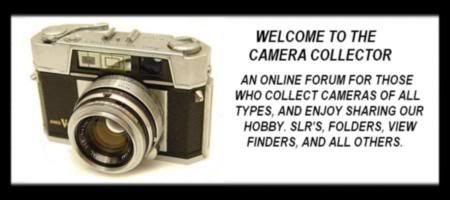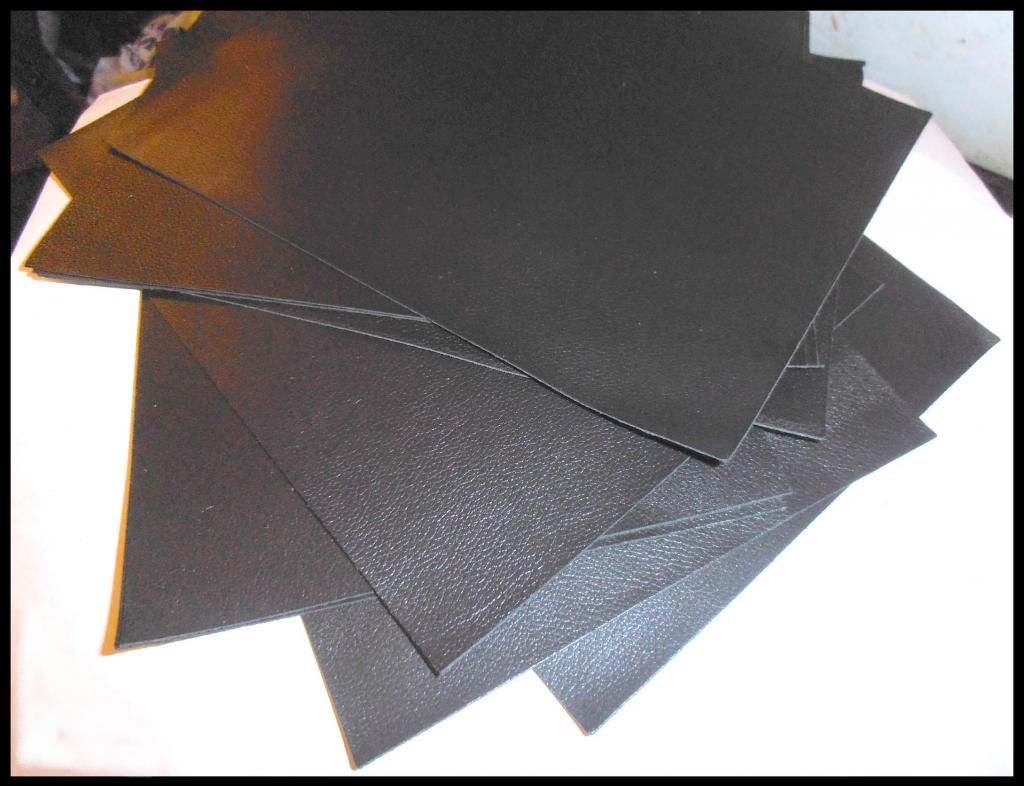Stephen
Lifetime Member
   Still collecting.......
Still collecting.......
Posts: 2,718
|
Post by Stephen on Sept 4, 2012 18:11:16 GMT -5
An on going project, the restoration of a British Ken Corfield "Periflex", the Gold Star model from the late 1950's early 1960's.
It was a Leica clone, designed to take Leitz lenses, but with unique patented reflex rangefinding focus, via a periscope viewfinder, which retracts on exposure. They were made in Wolverhampton at first, in the UK, and then in Northern Ireland in later years, the Company ending up in Guinness ownership. who closed down camera making operations.
High quality, they were meant to address the shortage of Leica cameras after the war, second bodies, or a cheaper alternative.
Unique in using a miniature periscope than reflected a SLR style, but reversed, view through the lens. it makes handling telephoto lenses very easy.
Early models had a manual pop up periscope, later, as in this one, built inside, and automatic retraction.
Film transport uses a no sprocket drive, frame spacing got larger as film progressed.
The originals used patented glass pressure plates, but the Gold Star was an economy model and used steel.
A conventional focal plane, but with variable slit, on the Gold Star 1sec to 1/300 (1/1000 on normal models) The unmarked positions actually do produce higher speeds.
Despite being intended as bodies for Leitz Lenses, they soon made their own or used Isco glass in Corfield bodies. They also marketed M42 lens versions, and made a rare M42 body as well.
The camera has been serviced and now just needs cosmetic restoration, new black leather, and paint. Unfortunately Ken Corfield used aluminium for the top and bottom and even though hard anodised, it shows marks easily, but they can be carefully polished out, or fine bead blasted when really bad. Black versions were made of all variants.
Photographic results depend purely on the lens used, and Corfield own are very reasonable, and cost a fraction of Leitz lenses. It cannot take deep mounts or collapsible types, due to the Periscope focusing mirror.
A very usable quality 35mm rangefinder/ semi reflex camera overall.
If image is too large , right click and view option should just fill the screen
Stephen.
|
|
|
|
Post by Rachel on Sept 5, 2012 3:40:57 GMT -5
I had one of these many many years ago. I have seen them at camera fairs but generally in very poor condition. From what I recall the glass pressure plate was attached via a plastic foam pad which inevitably deteriorated and came apart. Interestingly each Periflex lens had a matching screw in viewfinder. I can't recall what I traded my Goldstar in for but I wish that I had kept it.
There was a book about Periflex .... The Periflex Story by John E Lewis.
|
|
Stephen
Lifetime Member
   Still collecting.......
Still collecting.......
Posts: 2,718
|
Post by Stephen on Sept 5, 2012 7:23:40 GMT -5
The foam pad supported pressure plate was a major mistake by Ken Corfield, the glass also broke! It was accurate though, but was replaced by a sprung pressed steel plate with dimples, in the Northern Irish made ones, like the Gold Star. I knew the gentleman who worked for them on returns etc, and much against customers wishes, replaced the glass faulty ones with the steel type, which actually worked as well.
Guinness were not good owners, they specialised, under Irish tax law, in buying loss or near loss making companies, to right off against business taxes on the drinks business.
In the case of Corfield Periflex, they got a new grant assisted factory built for them as well, double bubble! They ran it for a while, then changed to automotive parts on another grant, losing all interest in cameras.
Ken Corfield was upset by this to say the least, but had closed the original Wolverhampton factory, sold on, and could not return to production in the UK. He did continue as a maker of large format cameras in later years.
Stephen.
|
|
Stephen
Lifetime Member
   Still collecting.......
Still collecting.......
Posts: 2,718
|
Post by Stephen on Sept 7, 2012 18:14:43 GMT -5
A Corfield Periflex accessory, a focus screen, same register as the body, that could be used to check lenses or re-focus them on tripods, with the camera substituted after using the device. The back is ground glass, with a mask for frame area. Leitz did a similar device, both very useful for checking lenses. Very accurately made.
Stephen.
|
|
Stephen
Lifetime Member
   Still collecting.......
Still collecting.......
Posts: 2,718
|
Post by Stephen on Sept 11, 2012 17:34:22 GMT -5
Got some black patterned leather pieces coming from Ebay, good book binding quality, not sure of the exact thickness which needs to be just short of about .9mm for the Corfield.
If too thick it will need scrapping to thin the leather, or at last to reduce the edges slightly. I use a repositioning type of impact adhesive for attachment, Dunlop do one as do Henkel.
This camera will need patterns in card cut out, and very slightly over sized panels fitted, scalpel trimmed to the edges of the body and back door gaps, however, there is no metal trim to hold it down or edge it, a major mistake by Ken Corfield, and explains why the leather came off so easily on Periflex cameras.
Stephen.
|
|
Stephen
Lifetime Member
   Still collecting.......
Still collecting.......
Posts: 2,718
|
Post by Stephen on Sept 12, 2012 9:41:45 GMT -5
Leather issue solved, a pack of 10 A4 size approx, black leather panels, assorted fine finishes, bookbinding quality, £4.50 from ebay, and they are all sub 1mm thickness, usable on most types of cameras straight away. There are two sheets a pretty good match for the pattern use on most Periflex camera bodies........ Where's the glue?!!
Stephen. |
|
|
|
Post by pompiere on Sept 12, 2012 12:58:37 GMT -5
Living in a rual area, every time I look at this thread's title, I see Cornfield Periflex. Very interesting camera.
|
|
Stephen
Lifetime Member
   Still collecting.......
Still collecting.......
Posts: 2,718
|
Post by Stephen on Sept 12, 2012 17:17:32 GMT -5
What the Periflex is good at, close-ups, the Lumax 2.8 50mm lens on n extension tube, the Lumax close focuses quite well any way at 15 inches, closer than many 1950/60 designs for standard lenses. Fuji colour neg film. Bee and pollen |
|
mickeyobe
Lifetime Member
   Resident President
Resident President
Posts: 7,280
|
Post by mickeyobe on Sept 14, 2012 22:58:32 GMT -5
The more I see of that camera and of its capabilities the more I would love to get one in my hot little hands.
Mickey
|
|
Stephen
Lifetime Member
   Still collecting.......
Still collecting.......
Posts: 2,718
|
Post by Stephen on Sept 15, 2012 6:21:05 GMT -5
The Periflex was always a bit misunderstood, it frankly did not have a large enough market to sell to, except in the 1950's when everything was in shortages from the war, due to import restrictions.
It was a bit too complex for the man in the street, and the Leica owners thought it too simple to be of much use. It completely solved the close up issues of using Leica, and allowed all Leica screw lenses, bar deep fit wide angle, to be used. There was a good range of accessories, all quite inexpensive, and darkroom equipment, range-finders, and meters as well.
Ken Corfield was utterly convinced there was a market, he persisted and sales shot up, but the reliabilty was not quite so good as Leica. the glass pressure plate broke or came away from the foam support, (cured on later models with a more conventional pressure plate), and the shutter, if it went wrong, was difficult to service, very cramped inside. Corfield offered a good back up service whilst at the original factory.
A minor nuisance was the film spacing, it used no sprockets at all, gaining a smooth lever action, but left the frame spacing advancing as the film went on, it annoyed Kodak and Kodachrome slide mounting, and causes trouble to this day with some automatic printers of colour negs.
The lenses were a mixed bunch, some UK made, some German. Ken Corfield also tried to pursued TTH (Rank Ltd) to make a standard 50mm F1.8 lens, but it would have cost more than the market could stand, and Rank, TTH's owner by then, did not want to bother with a special order. But, after all, the Periflex did take all the Leitz lens........
When made in the UK at Wolverhampton, everything was going fine, sales supported research and new models, but then the factory was condemned due to age, by the local Council, and the move to Northern Ireland turned out to be a complete disaster.
Ken Corfield got a grant towards a new factory, and then Guinness in Dublin, offered a deal, buying the company complete, getting the grant, and a new factory for next to nothing.
They abandoned the Cameras, and turned the factory over to making car parts, within a couple of years. It is now known that Guinness often bought companies as loss makers to set off against Irish and UK tax. It was never their intention to make cameras, and it brought the only major 35mm camera maker in the UK to a halt.
Corfield could not afford to move back to Wolverhampton, and the brand vanished, except for the Corfield 66 and later specialist cameras. The 66 was developed in Northern Ireland, but few were made before Guinness brought the production to a close.
|
|
Stephen
Lifetime Member
   Still collecting.......
Still collecting.......
Posts: 2,718
|
Post by Stephen on Sept 15, 2012 6:38:16 GMT -5
And by the way, the Periflex being a thin body can take adaptors for almost any 35mm reflex camera lenses, bar Alpa, that is also thin bodied.
Periflex made bodies with M42 as well as Exakta mount as standard. They would also do specials for any mount to order, I have seen Nikon and Canon versions of the original Periflex. They also made periscope less models with other mounts for special uses.
The focus screen accessory, or the periscope would check if properly focused. I have made my own adaptors for Olympus OM, M42, and Nikon.
Apart from the new mirrorless Digital Reflex cameras, I can't think of any 35mm camera that can take more lenses on it and be able to focus them, than the Periflex....viewfinders are the problem, but the Russian turret one works treat up to 135mm.....
|
|
|
|
Post by barbarian on Sept 16, 2012 19:52:47 GMT -5
I'm feeling more than a little envy on this one.
Very interesting and attractive camera, it is.
|
|





